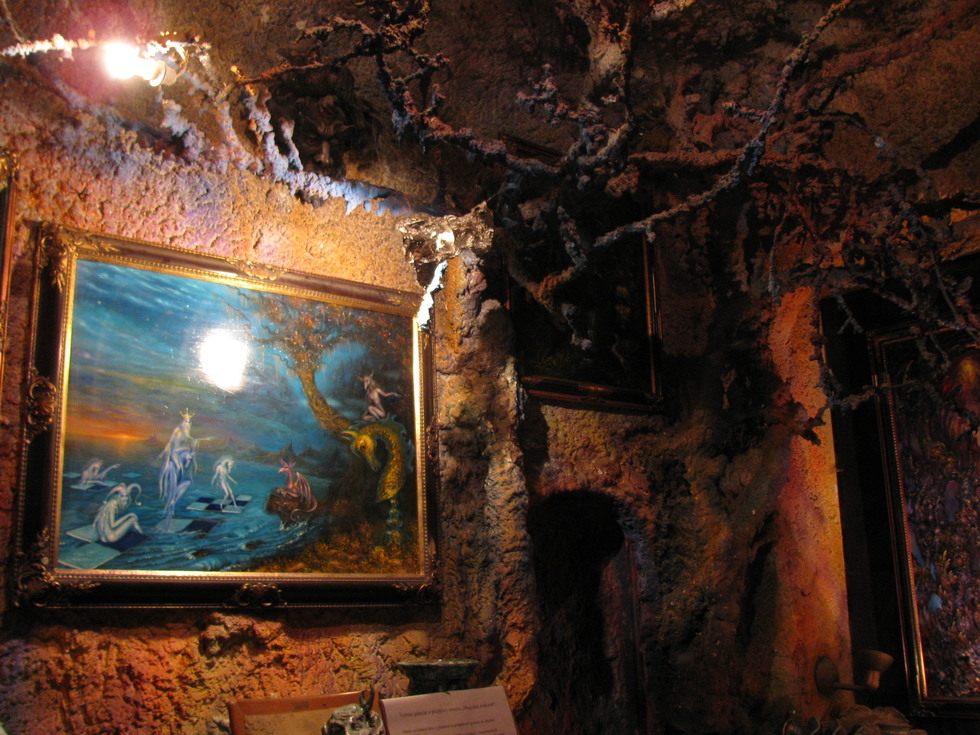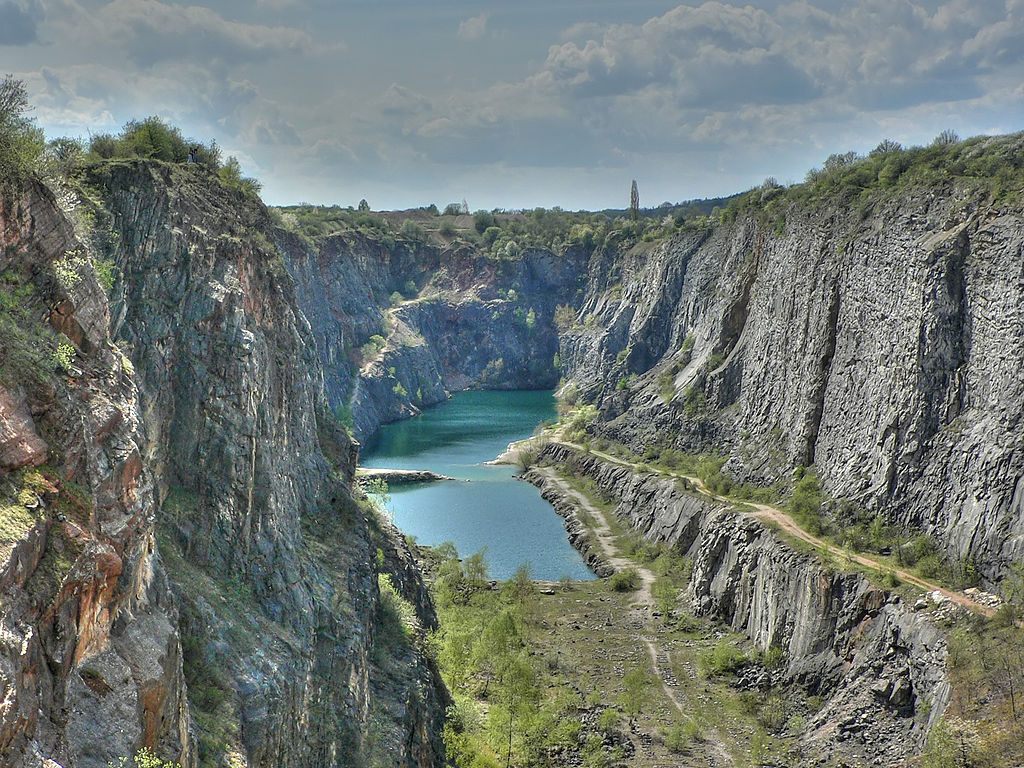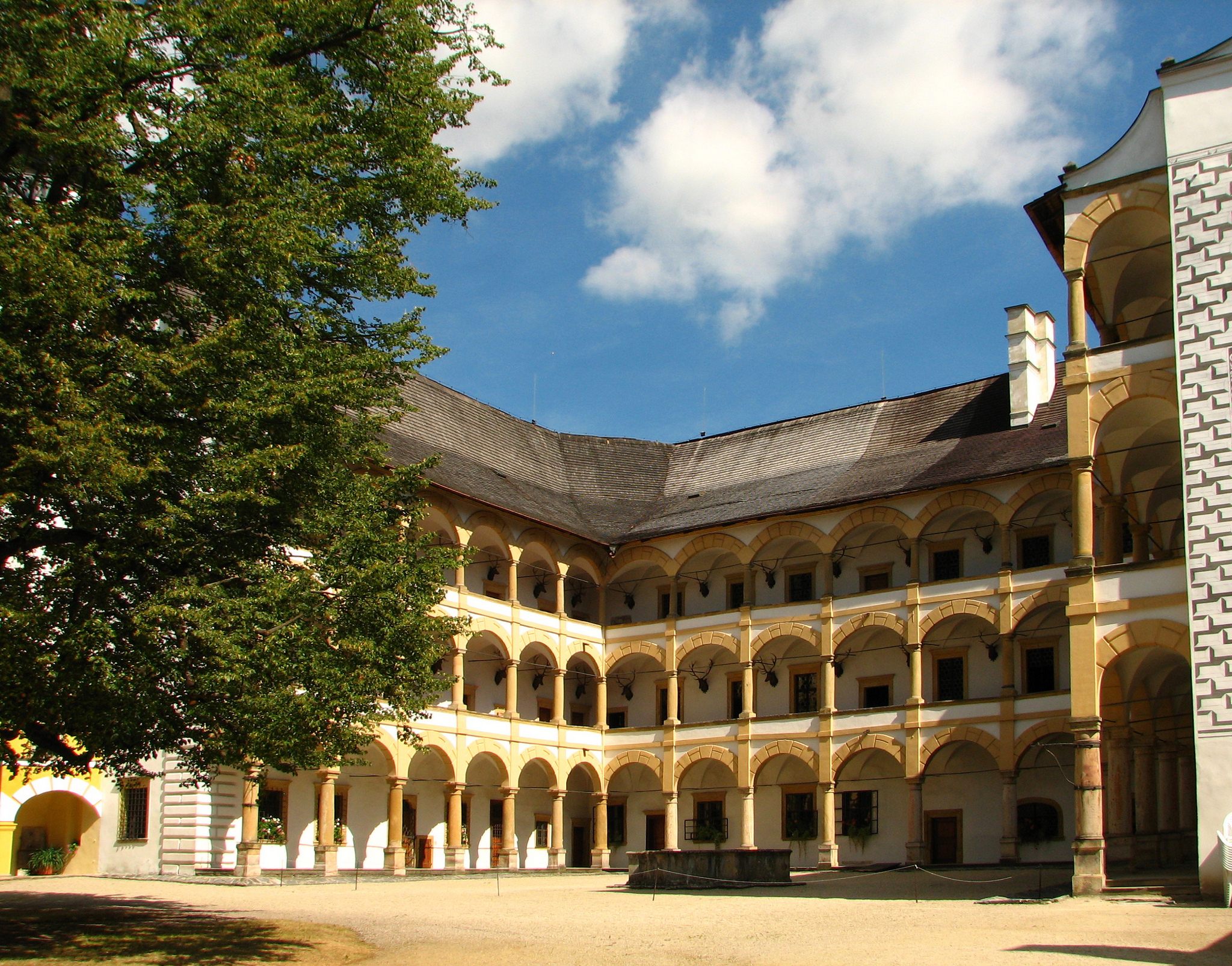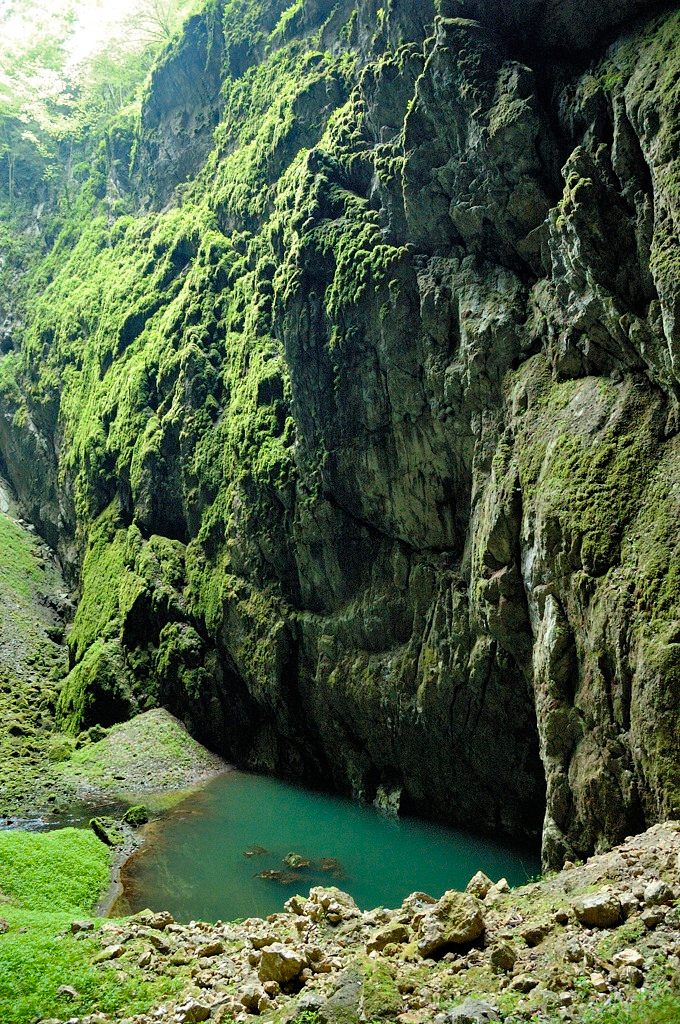Uncover a World of Magical Nature in the Czech Republic
There lies an ethereal natural world beyond the architectural wonders of Prague.
Beyond the awe-inspiring structural wonders of Prague, there lies a hidden magical world in the Czech Republic. The country’s natural attractions are rich in the mystical and the ethereal, whether in its spectacular natural formations or in its stunning works of art and architecture directly inspired by nature. Atlas Obscura helps you uncover the magical world within the nature of the Czech landscape.
1. Magic Cave, Prague

A Prague artist has turned his home into a cave complete with decorative roots and swirling colors, making the experience of visiting the gallery like stepping into a fairytale world. (Photo: andynelstravel)
Among the forests covering Petrin, a small hill in Prague, an artist has established a psychedelic gallery of art within a cave of his own creation. Painter and sculptor Reon Argondian (née Jan Zahradnik) was not content with simply showing his pieces in galleries, so instead he turned his home into the Magic Cave, an old mill building that is now home to the fictional Kingdom of Argondia. Every surface in the cave has the rough natural look of stone accented by large, decorative roots that jut out at irregular angles, and not an inch of the place is without swirling color. As a result, the experience of visiting the gallery is not unlike stepping into a fairytale world.
2. Velka Amerika, Vysoký Újezd

Middle Earth, or the Czech Republic? Frodo wouldn’t look out of place at Velka America, the stunning gorge left in the wake of a former limestone quarry. (Photo: Pavel Koběrský/CC BY-SA 2.5)
Near the village of Mořina, there lies a stunning natural attraction left in the wake of a former limestone quarry. Velka Amerika, which was once one of the largest limestone mines in the Czech Republic, is today a beautiful gorge that would not look out of place in Middle Earth. The large mining crater, which is now occasionally referred to as the “Czech Grand Canyon,” offers gorgeous hikes with views of the stunning blue waters that even the most homely of hobbits couldn’t pass up.
3. Dripstone Wall, Prague

Signs along the wall note that, if one stares hard enough, it’s possible to make out human and animal faces peering out from within the wall’s recesses. (Photo: Yannick Lorlot/CC-BY SA 2.0)
Resting at the heart of Prague’s baroque Wallenstein Palace grounds is a famously eerie wall, surrounded by lush gardens. Fashioned in an early baroque style, the grounds were partitioned into several distinct areas, the most secluded and fascinating of which was known as “The Grotto.” In this portion of the garden, aspects of real and artificial elements of nature co-mingle. The Dripstone Wall within The Grotto is made from a haunting, uncanny assemblage of stalactite-like rocks, and is rumored to contain secret passageways that wind through its interior. Throughout the wall’s nearly 500 years of existence, no one has figured out if this is true, but that hasn’t stopped visitors from trying to find a way in.
4. Cesky Raj, Turnov

The unearthly rock town, Hubra Skala, is one of the most famous sites in the Bohemian Paradise. (Photo: Julius Hrivnac/CC BY-SA 3.0)
The word “paradise” might conjure images of a luscious beach, cerulean waves, or hammocks stretched between palm trees–but the Czech Republic offers a different, yet similarly compelling, take on the term. The forests surrounding Turnov, only a day-trip away from Prague, offer a mystical version of utopia. Cesky Raj, or the Bohemian Paradise, is a protected area in the north of the country, covered in majestic forests, hilltop castles and volcanic pillars. Among the sites in the area, the Hruba Skala or rock town, is the most famous. The bright white of the pillars contrasts strikingly with the deep greens of the surrounding woodland, and creates a scene so beautiful that it seems otherworldly.
5. Sky Walk, Dolní Morava

The Sky Walk atop a peak in the Králický Sněžník Mountains makes visitors feel as though they are flying through the mountains. (Photo: Courtesy of Dolní Morava Relax & Sport Resort)
Few things could feel more magical than soaring through gorgeous landscapes of ice and snow, free as a bird. Though humans can’t quite fly through the mountains yet, fortunately for us, the Czech firm Fránek Architects has been able to reproduce that exact feeling with their extreme Sky Walk. The structure is essentially a giant mountain slide which sits atop a peak in the Králický Sněžník Mountains. You can either go down the traditional way, or if you’re feeling less active, the Sky Walk boasts a mesh web inside its highest loop, which visitors can lay down on to feel as though they are floating through the clouds.
6. Brno Dragon, Brno

A stereoscope of the proud Brno citizens standing below their conquest, a fearsome “dragon.” (Photo: josefnovak33/CC BY-NC-SA 2.0)
Hanging in the Old Town Hall of Brno is the carcass of an actual dragon, or so the originators of the legend would have you believe. The story goes that the dragon once terrorized the Moravian city, savaging the citizens and their livestock. No one knew how to stop the dragon, until a visiting butcher came up with a master plan, and sewed a bunch of caustic lime into an animal carcass to poison the dragon. However, the body of the dragon that is used to prove the veracity of this tale is actually the body of a crocodile. The taxidermied reptile in question is so enormous that it’s not hard to see why the people of Brno believed it was a mythological creature.
7. Velké Losiny Château, Velké Losiny

One of the courtyards of the chateau—not all that it seems. (Photo: Petr/CC BY-SA 2.0)
This 16th century chateau in Velké Losiny, a small town east of Prague, appears charming and warm. However, its history is anything but. At the height of Europe’s witch trials in the 1600s, a greedy maniac named Jindřich František Boblig tortured, burned, and decapitated nearly a hundred innocent people on these grounds. In 1678, Boblig headed a witch commission, which was soon burning women at the stake for crimes such as smuggling communion bread in a prayer book. Boblig oversaw the burning of entire families at the stake, torturing them into admitting false confessions and often confiscating their wealth. The seemingly pristine chateau is a poignant example of how beautiful things can originate from ugliness.
8. Macocha Abyss, Vilémovice

The abyss is 138 meters deep and home to a grim local legend. (Photo: Doronenko/CC BY-SA 3.0)
This brooding abyss, also referred to as the Macocha Gorge, is the deepest sinkhole in Central Europe. It’s not only home to rare flowers and a three-kilometer-long (1.86-mile) walkway, but also a grim local legend. Its nickname? Propast Macocha, or “The Stepmother Abyss,” a name that can be traced back to the tale of a once widowed stepmother and her unwanted stepson. When the stepmother remarried and had a son of her own, she lured her stepson to the edge of the Machocha Gorge and then pushed him into the abyss. Miraculously, the boy survived and was rescued, spurring the local townspeople to throw his stepmother into the abyss instead. At 138 meters deep, the gorge is part of a vast underground system formed by the Punkva River, which runs through the Moravian karst in the eastern Czech Republic. It is one of the few places where the underground river sees daylight.
These posts were written in partnership with CzechTourism. For more obscure and unconventional stories, from the Land of Stories, head here.






















Follow us on Twitter to get the latest on the world's hidden wonders.
Like us on Facebook to get the latest on the world's hidden wonders.
Follow us on Twitter Like us on Facebook